45 dv on food labels
How to Calculate Percentage DV for a Nutrient - SFGATE Divide the given amount of the nutrient by the appropriate recommended daily value found on the FDA guide. So if your item contains 300 milligrams of calcium per serving, divide 300 by 1,000, which equals .30. Multiply the result by 100 to obtain the percent daily value. In the example, you would multiply .30 by 100 which equals 30. How to Understand and Use the Nutrition Facts Label | FDA Feb 25, 2022 · Overview. The information in the main or top section (see #1-4) of the sample nutrition label (below) can vary with each food and beverage product; it contains product-specific information ...
Your Guide to the New Food Label | National Kidney Foundation 4 oz or ½ cup. Oils, margarine. 1 teaspoon. Know your diet needs for calories, fats, cholesterol, carbohydrates, protein, potassium, and phosphorus. Ask your kidney dietitian to help you. No single food will have all the nutrients at the levels you need, but a balanced diet from various foods will help you meet your needs.

Dv on food labels
What Does "% Daily Value" Mean on a Food or Supplement Label? Generally, the Daily Values chosen for nutrient labels are based on a 2,000-calorie diet for healthy adults — except for when they aren't. Sometimes — particularly when it comes to critical nutrients — they reflect the needs of a population sub-group that requires more. For example, the RDA for iron is 8 mg for men and 18 mg for women. FDA Rounding Rules for Your Food Label - LabelCalc Not only can this rounding function save you a lot of time and tedious work when creating your nutrition label, but FDA-compliant software will also ensure that everything on your label—from the values to the label size and layout —is accurate and up to date with the latest FDA labeling guidance. And as a food manufacturer, you know that providing consumers with accurate nutrition information for the food products you create is one of your greatest responsibilities. Food Labels | CDC - Centers for Disease Control and Prevention All the numbers on this label are for a 2/3-cup serving. This package has 8 servings. If you eat the whole thing, you are eating 8 times the amount of calories, carbs, fat, etc., shown on the label. Total Carbohydrate shows you types of carbs in the food, including sugar and fiber. Choose foods with more fiber, vitamins, and minerals.
Dv on food labels. Daily Values (DVs) - National Institutes of Health A DV is often, but not always, similar to one's RDA or AI for that nutrient. DVs were developed by the U.S. Food and Drug Administration (FDA) to help consumers determine the level of various nutrients in a standard serving of food in relation to their approximate requirement for it. The label actually provides the %DV so that you can see how much (what percentage) a serving of the product contributes to reaching the DV. Protein Label - LabelCalc The DV for protein is 50g, so the RACC of the food must contain over 10g of protein to have the "High in Protein" nutrient content claim. To have a nutrient content claim of a food being a "Good Source of Protein" the food must contain 10-19% of the DV per RACC, or 5 to 9.5g of protein per RACC. The Lows and Highs of Percent Daily Value on the Label Use %DV to determine if a serving of the food is high or low in an individual nutrient. As a general guide: 5% DV or less of a nutrient per serving is considered low. 20% DV or more of a... Food Labels: Fat & Cholesterol | Home & Garden Information Center Use % DV as your guide for identifying which foods are high or low in a nutrient. This allows you to choose foods wisely so that you eat enough of some nutrients while not eating too much of others. The label does the math for you, putting all the numbers on the same scale of 0-100% DV for the day.
Where is DV on nutrition label? - TeachersCollegesj Daily Value: DV, a term on food labels based on the RDA (Recommended Dietary Allowance) designed to help consumers use food label information to plan a healthy diet. The Daily Value serves as a basis for declaring on the label the percent of the DV for each nutrient that a serving of the food provides. What is the difference between the RDA and the DV for vitamins and ... The RDAs do not typically appear on food and supplement labels. The DVs (Daily Values) are set by the FDA. On food and supplement labels, you will find the "%DV" listed for vitamins and minerals which are required by law to be listed. Until the FDA updated the DVs in 2016, many DVs (which were originally set in 1968) did not necessarily reflect ... Daily Value and Percent Daily Value: Changes on the New Nutrition and ... packaged food or supplement has 30mcg in one serving, the %DV for that nutrient in a serving of the product would be 10%. If you ate one serving of the product, you would have met 10% of your need Percent daily value - Canada.ca The % DV is found on the right-hand side of a nutrition facts table. It is a guide to help you make informed food choices. It shows you if the serving size has a little or a lot of a nutrient: 5% DV or less is a little. 15% DV or more is a lot. This applies to all nutrients with a % DV. The % DV is not meant to track the total amount of nutrients you have had for the day.
eCFR :: 21 CFR Part 101 -- Food Labeling § 101.1 Principal display panel of package form food. The term principal display panel as it applies to food in package form and as used in this part, means the part of a label that is most likely to be displayed, presented, shown, or examined under customary conditions of display for retail sale. The principal display panel shall be large enough to accommodate all the mandatory label ... Home | Dietary Supplement Label Database (DSLD) | NIH Office of Dietary ... 0 10,000 20,000 30,000 40,000 50,000 Number of Labels Other Combinations Botanical Non-Nutrient/Non-Botanical Vitamin Botanicals with Nutrients Amino Acid/Protein Omega 3 and Other Fatty Acids Mineral Multi-Vitamin and Mineral (MVM) Single Vitamin and Mineral Products in the DSLD are Classified by 4 Target Groups What Is the Difference Between DRI & Daily Value? This number, called the daily value or DV, is based on the amount of each nutrient needed for a 2,000-calorie-a-day diet. You won't find the daily value on the nutrition facts label.... What does %DV, "Good Source" & "High Source" mean? Simply put, the daily value (which is not listed on nutrition labels) is the amount of each nutrient that an average person (above age 4) needs for basic health—assuming the average person also requires about 2,000 calories per day. The percentage shows the amount of the DV that the food provides per serving.
Calcium - Health Professional Fact Sheet FDA requires food labels to list calcium content. Foods providing 20% or more of the DV are considered to be high sources of a nutrient, but foods providing lower percentages of the DV also contribute to a healthful diet. ** Calcium content varies slightly by fat content; the more fat in the food, the less calcium it contains.
Changes to the Nutrition Facts Label | FDA - U.S. Food and ... Mar 07, 2022 · Manufacturers with $10 million or more in annual sales were required to update their labels by January 1, 2020; manufacturers with less than $10 million in annual food sales were required to ...
Understanding Food Nutrition Labels | American Heart Association Mar 06, 2017 · The % Daily Value (DV) tells you the percentage of each nutrient in a single serving, in terms of the daily recommended amount. If you want to consume less of a nutrient (such as saturated fat or sodium), choose foods with a lower % DV (5 percent or less).
Dietary Supplement Labeling Guide: Chapter IV. Nutrition ... The % DV must be declared for all dietary ingredients for which FDA has established Daily Values, except that 1) the percent for protein may be omitted, and 2) on the labels of dietary supplements ...
2.6: Understanding Food Labels - Medicine LibreTexts The % Daily Value (% DV) represents the proportion of the total daily recommended amount that you will get from one serving of the food. For example, in the food label in Figure 2.6. 1, the % DV of calcium is 20%, which means that one serving of this food provides 20% of the daily recommended calcium intake.
How to Read Food Labels Without Being Tricked - Healthline Aug 19, 2020 · Reading labels can be tricky. Consumers are more health-conscious than ever, so some food manufacturers use misleading tricks to convince people to buy highly processed and unhealthy products.
Food Labeling & Nutrition | FDA Food labeling is required for most prepared foods, such as breads, cereals, canned and frozen foods, snacks, desserts, drinks, etc. Nutrition labeling for raw produce (fruits and vegetables) and...
Daily Value: Definition and How to Calculate It - Insider General advice: As a rule of thumb, if something has a 5% DV or less of a nutrient, it is considered to be low, while 20% DV or more is high. The FDA recommends you choose foods higher in: Fiber: at least 28g per day Vitamin D: At least 20mcg per day Calcium: At least 1300mg per day Iron: At least 18mg per day Potassium: At least 4700mg per day
How to Calculate % of Daily Value on Food Labels | livestrong Step 1 Find the nutrient amount on the food label. Step 2 Look up the total daily recommended amount in the USDA Dietary Guidelines. Step 3 Divide the nutrient amount by the total daily recommended value. Step 4 Multiply by 100. Things You'll Need United States Department of Agriculture (USDA) Dietary Guidelines Food label Calculator Tip
What does dv mean on food labels? - Dane101 What do the Daily Value numbers mean on food labels? Percent Daily Value (DV) on the Nutrition Facts label is a guide to the nutrients in one serving of food. For example, if the label lists 15% for calcium, it means that one serving provides 15% of the calcium you need each day. DV s are based on a 2,000-calorie diet for healthy adults.
Dv Food Labels | Zazzle Stick out with amazing Dv food labels at Zazzle! Labels for jars in a huge range of theme & designs. Add art or text with our design tool. Make an impression today! Skip to content EXTENDED - ENDS TONIGHT! 25% OFF SITEWIDE * Get $25 to Spend When You Refer a Friend Free Shipping with Zazzle Black 쑑쑐쑝쑞 Gifts 쑅쑆 Trending 쑛쑘 Sell 쑇쑈 My Stuff
How To Read Food and Beverage Labels - National Institute on Aging Although frozen and canned fruits and vegetables have food labels, fresh varieties often do not. You can find nutrition information for fresh vegetables and fruits on the USDA website. Or you can call the U.S. Department of Agriculture's Food and Nutrition Information Center at 301-504-5414. Understanding percent Daily Value (% DV)
What does percent Daily Value (DV) on food labels mean? Daily values are average levels of nutrients for a person eating 2,000 calories a day. A food item with a 5 percent DV means 5 percent of the amount of fat that a person consuming 2,000 calories per day would eat. Remember, percent DVs are for the entire day -- not just for one meal or snack. You may need more or less than 2,000 calories per day.
Daily Value on the New Nutrition and Supplement Facts Labels Feb 25, 2022 · For example, if the DV for a certain nutrient is 300 micrograms (mcg) and a packaged food or supplement has 30 mcg in one serving, the %DV for that nutrient in a serving of the product would be 10%.
Learn About Percent Daily Value On Food Labels | Chegg.com Overview of Percent Daily Value on Food Labels. Based on a 2000-calorie diet for healthy individuals, the daily value (DVs) are based on a 1,000-calorie diet. However, a greater or lower caloric intake might still be used as guidance. For example, it informs if an item is high or poor in one or more nutrients.
Food Labels | CDC - Centers for Disease Control and Prevention All the numbers on this label are for a 2/3-cup serving. This package has 8 servings. If you eat the whole thing, you are eating 8 times the amount of calories, carbs, fat, etc., shown on the label. Total Carbohydrate shows you types of carbs in the food, including sugar and fiber. Choose foods with more fiber, vitamins, and minerals.
FDA Rounding Rules for Your Food Label - LabelCalc Not only can this rounding function save you a lot of time and tedious work when creating your nutrition label, but FDA-compliant software will also ensure that everything on your label—from the values to the label size and layout —is accurate and up to date with the latest FDA labeling guidance. And as a food manufacturer, you know that providing consumers with accurate nutrition information for the food products you create is one of your greatest responsibilities.
What Does "% Daily Value" Mean on a Food or Supplement Label? Generally, the Daily Values chosen for nutrient labels are based on a 2,000-calorie diet for healthy adults — except for when they aren't. Sometimes — particularly when it comes to critical nutrients — they reflect the needs of a population sub-group that requires more. For example, the RDA for iron is 8 mg for men and 18 mg for women.
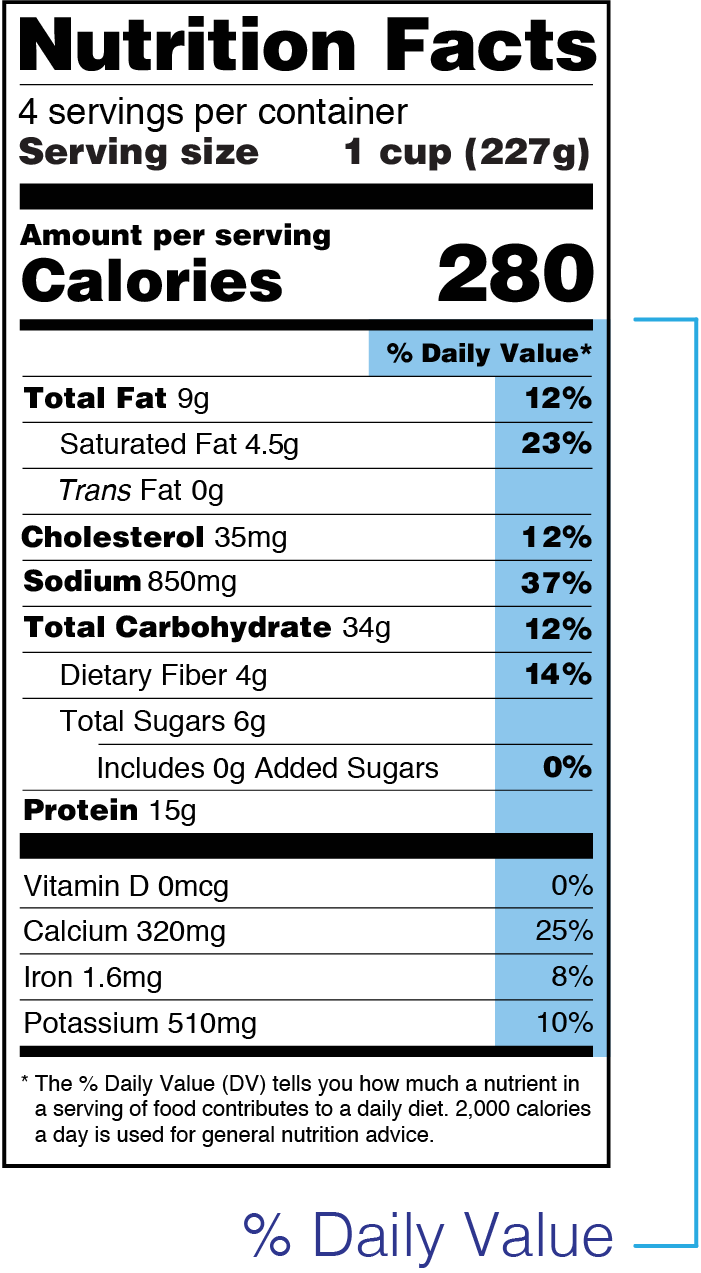
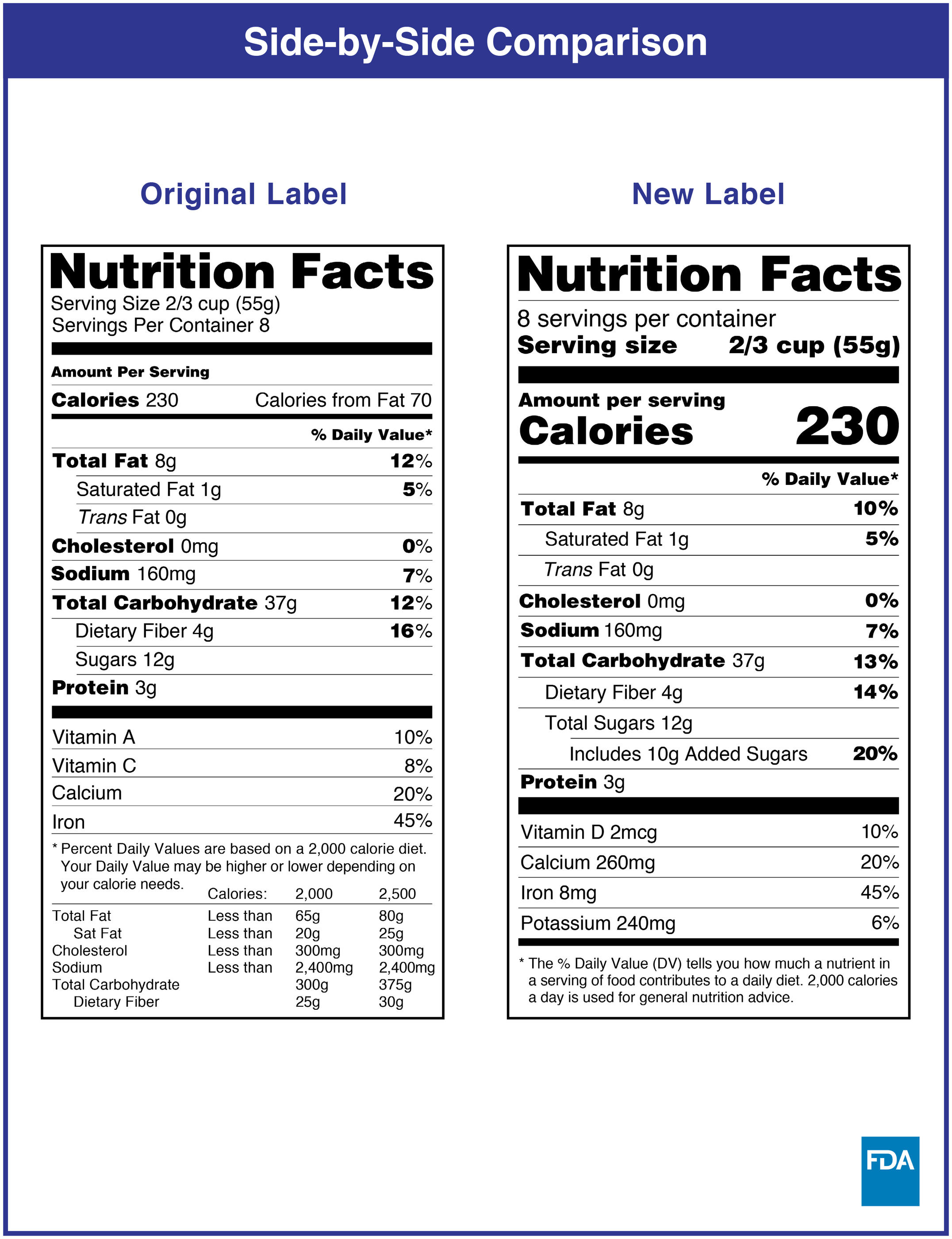


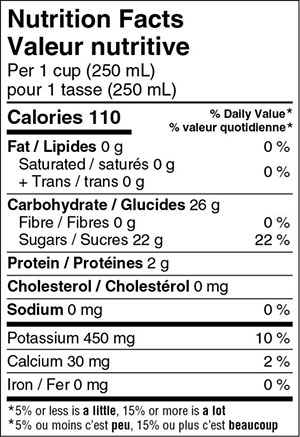
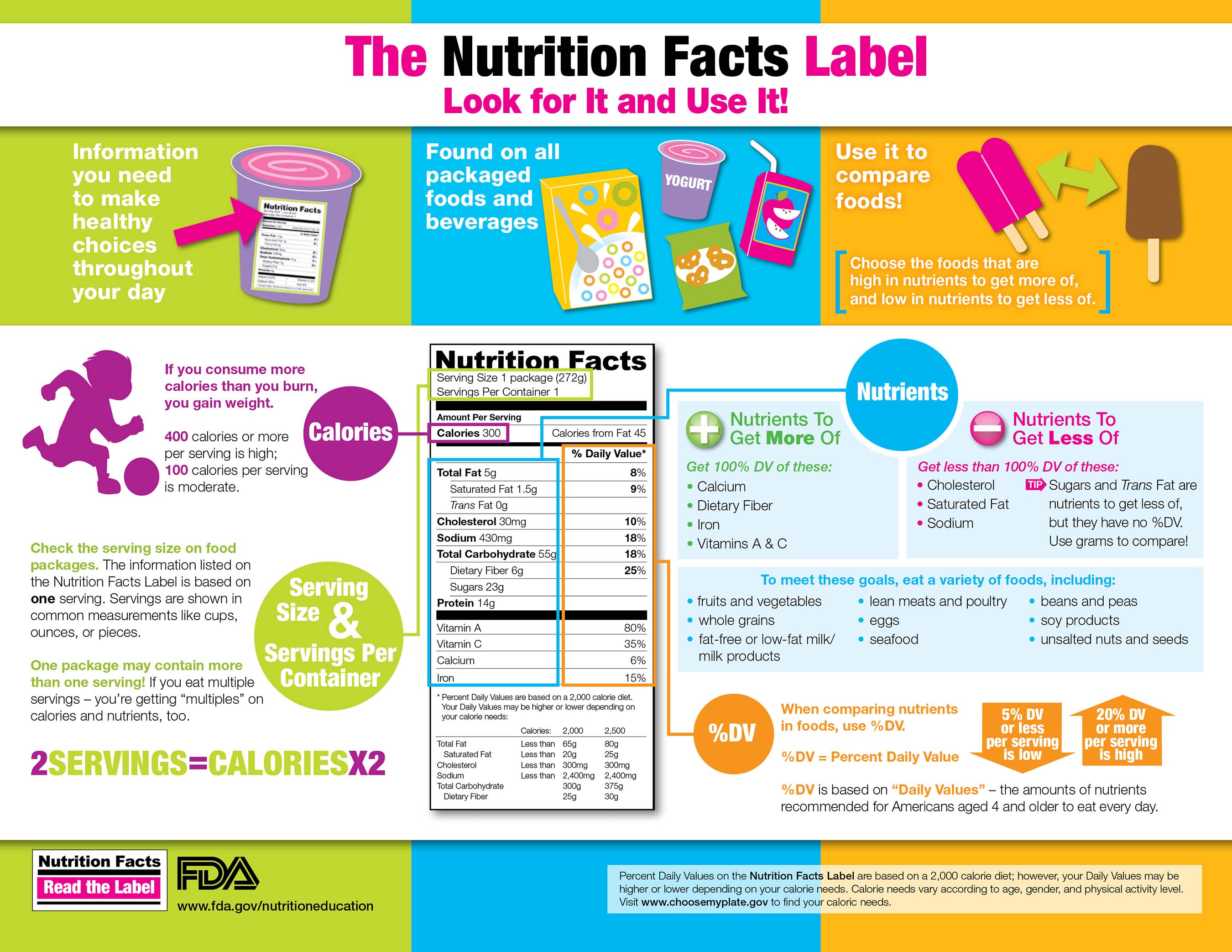
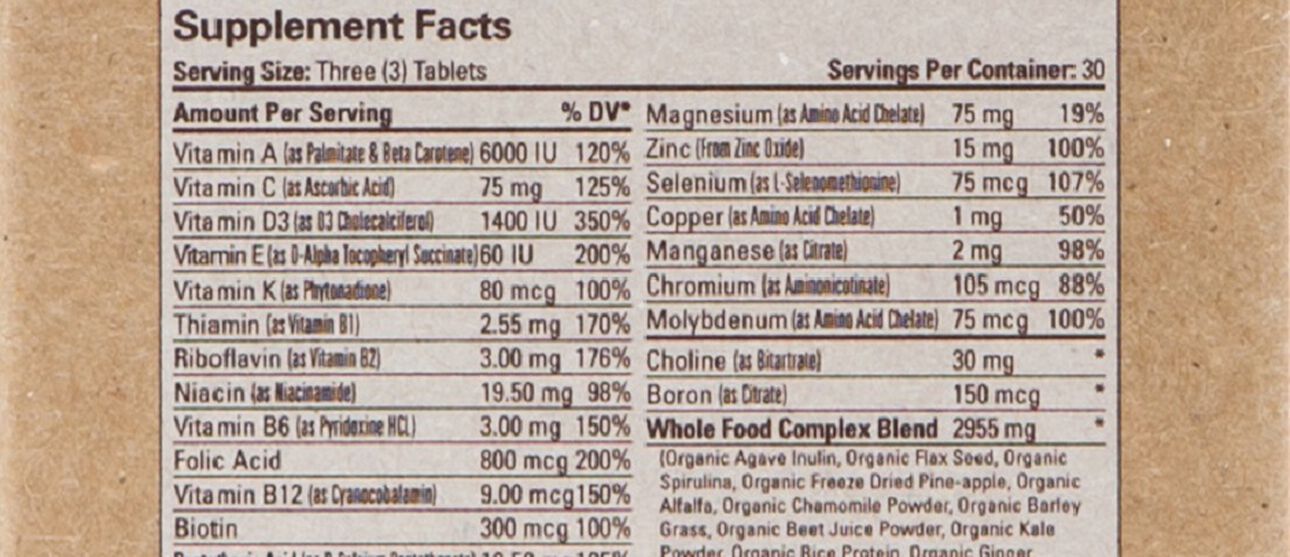


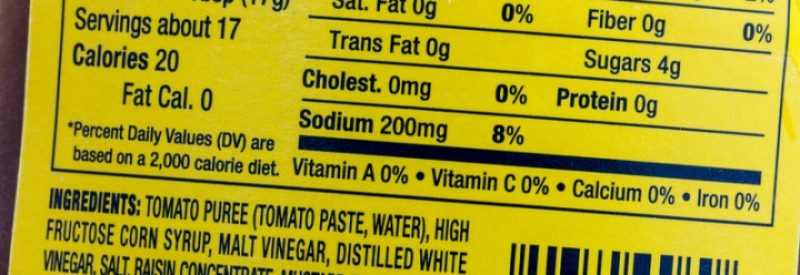


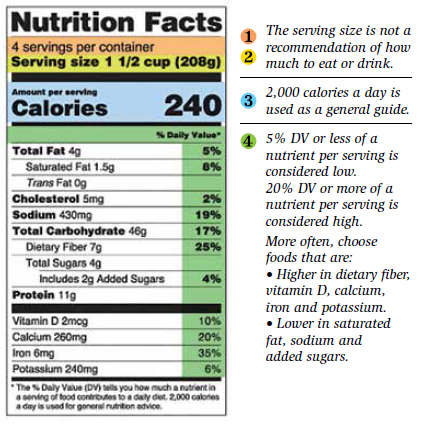
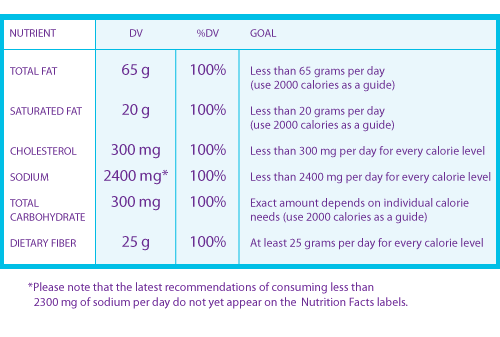
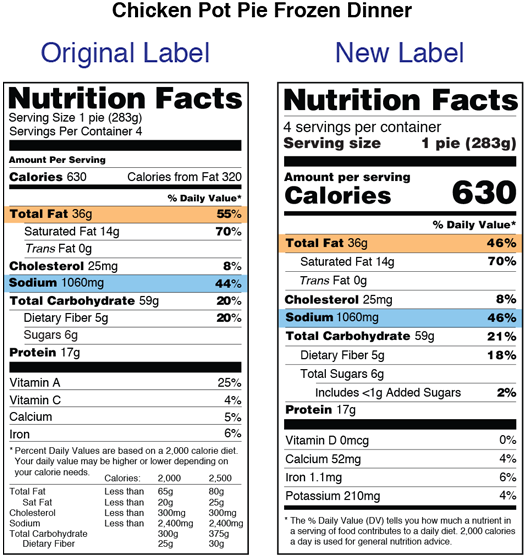

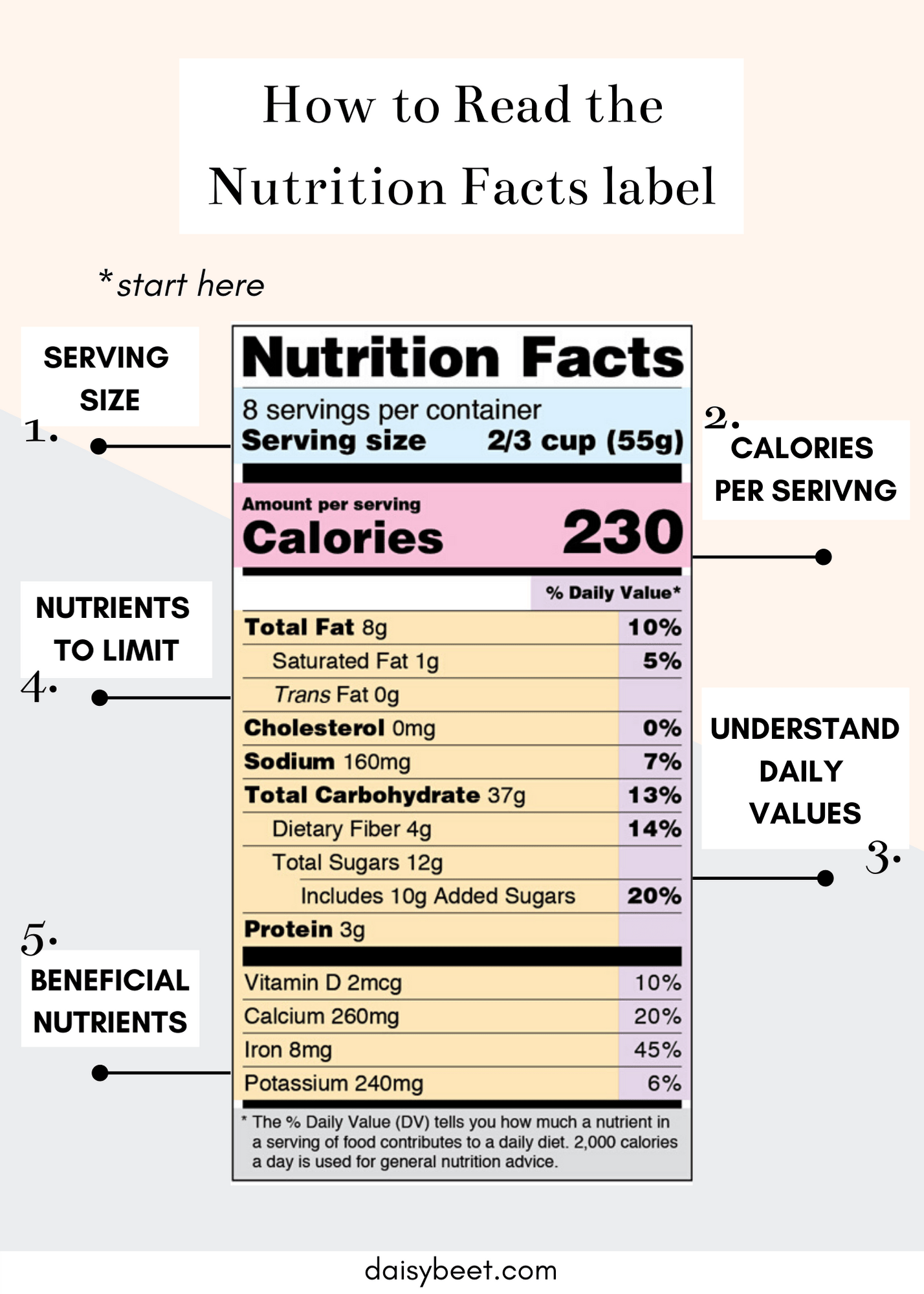





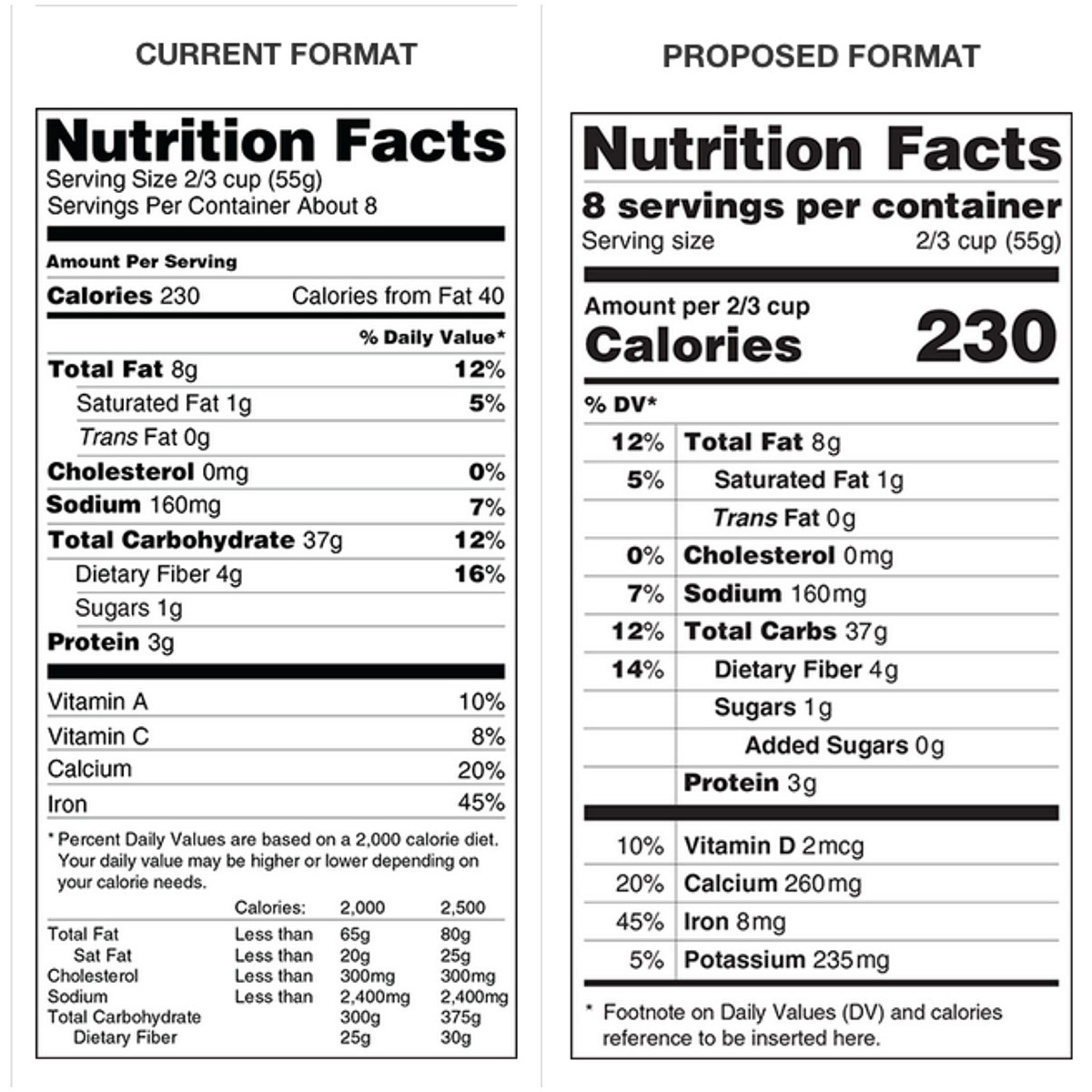
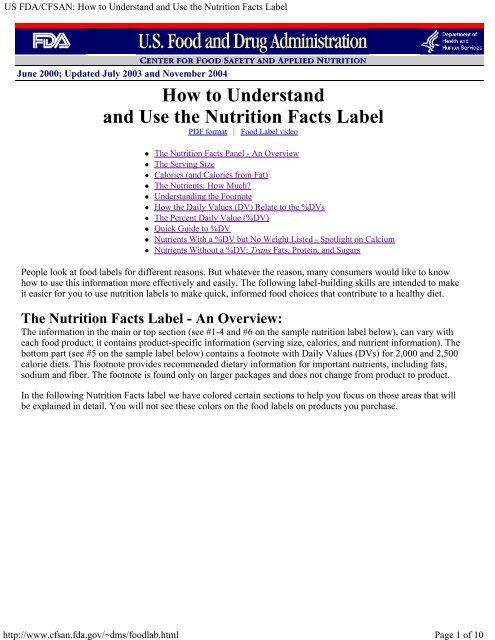


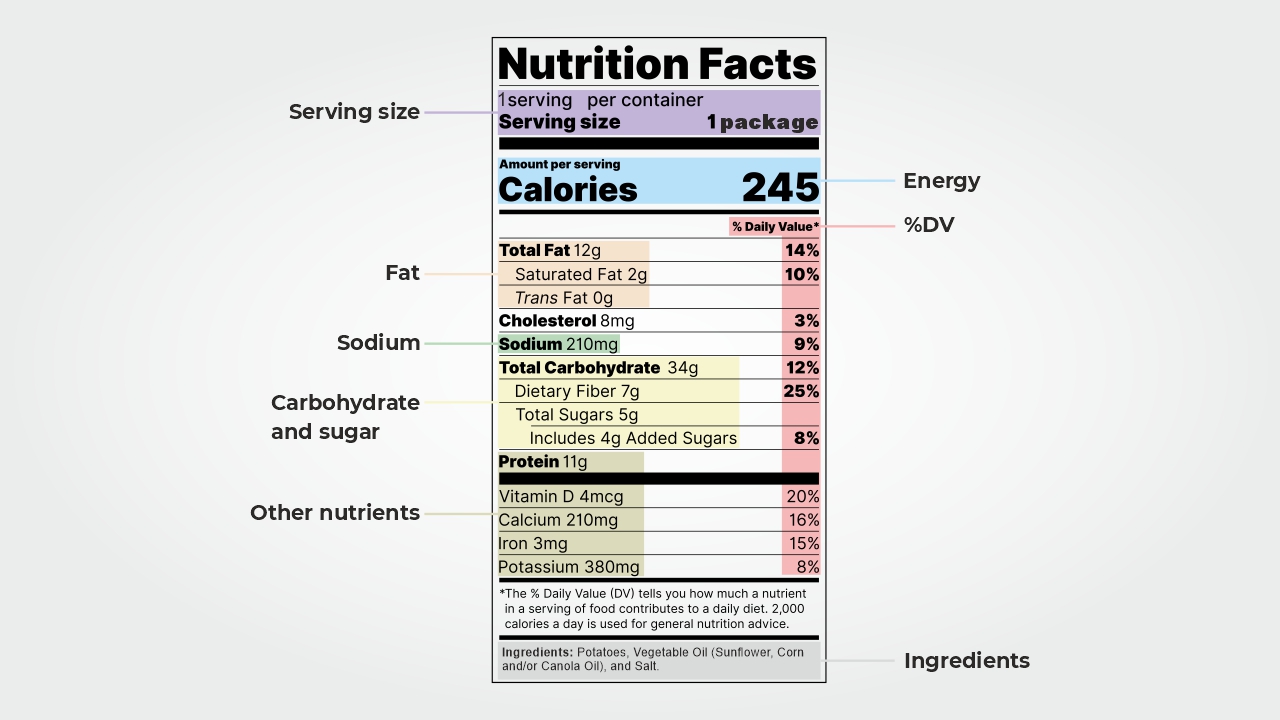


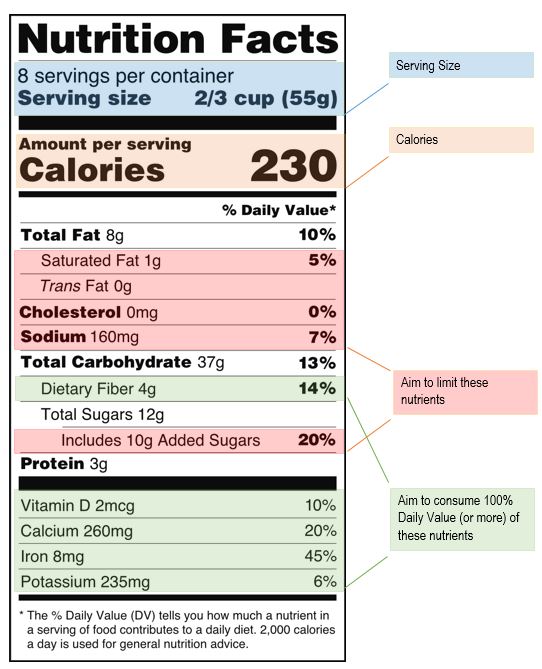
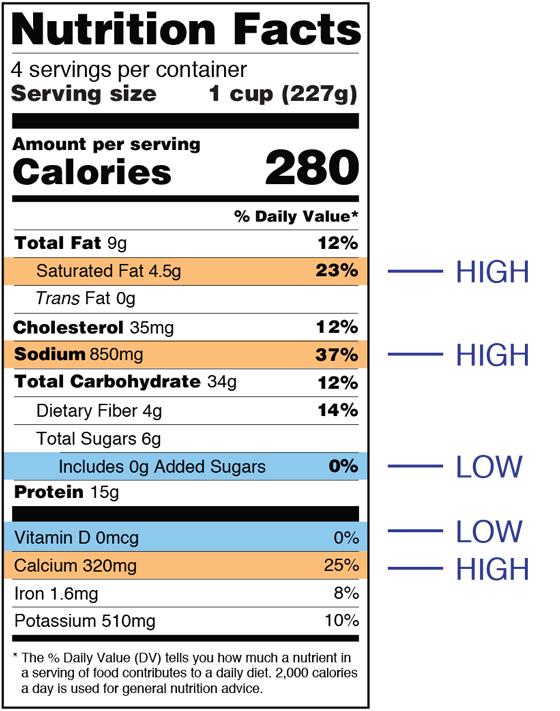



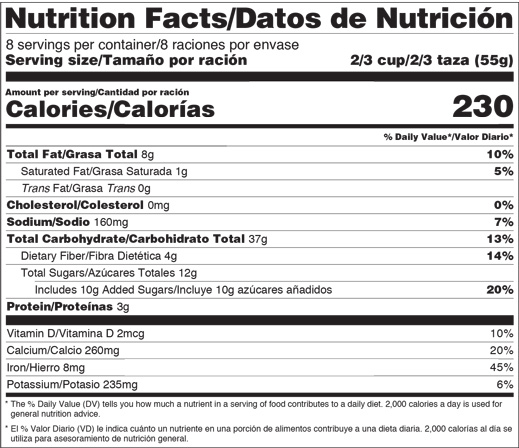
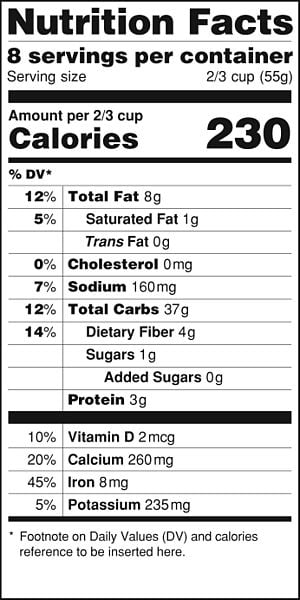
Post a Comment for "45 dv on food labels"